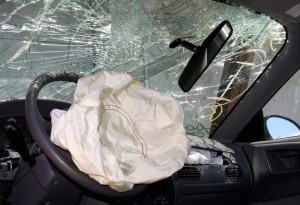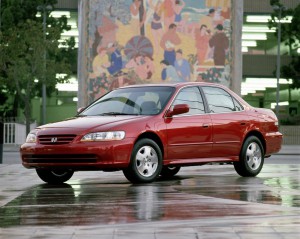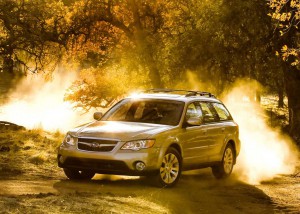One of the largest safety scandals in automotive history may finally be resolved with the move to recall vehicles equipped with yet another 10 million faulty Takata airbags used by 14 different automakers.
That marks the final phase of an agreement reached between the now-bankrupt Takata and the National Highway Traffic Safety Administration back in 2015. That deal called for a phased series of callbacks to replace airbags the supplier made which were prone to misfiring, especially as they aged or when a vehicle was operated in warm, moist climates.
At least 24 people have died, most in the U.S., as a result of those malfunctions, which can lead to metal and plastic shrapnel being blown into the passenger compartment. The most recent fatality involved an unidentified driver operating a 2002 Honda Civic involved in a crash near Phoenix in June 2018. Hundreds more people have been injured.
(Takata airbag kills 16th person in U.S., NHTSA says)
Ultimately, about 100 million airbags will have to be replaced worldwide, 70% of those in the United States. The exact number of vehicles involved is uncertain, as many use more than one of the faulty Takata airbags. But it is believed to be at least 50 million, according to various experts.
The latest and final phase of the extended Takata recall will cover about 10 million faulty bags used in vehicles sold by 14 manufacturers, including Audi, BMW, Honda, Daimler (vans), Fiat Chrysler, Ferrari, Ford, General Motors, Mazda, Mitsubishi, Nissan, Subaru, Toyota and Volkswagen. Vehicles covered by this wave include some dating back as far as 1999 and as new as 2014 Subaru Forester, Legacy and Outback models.
In some cases, some older vehicles actually may have been recalled previously. In some instances, automakers tried a temporary fix, installing new inflators using the same, discredited technology because replacements with alternative propulsion systems weren’t available yet due to manufacturing shortages. The idea was that newer inflators were less likely to malfunction, at least for a while. Now, as more of the new inflator designs are available, those vehicles will need a second replacement.
While controversial, the 2015 compromise worked out between NHTSA and Takata was aimed at recognizing two realities: first, that the risk of an airbag malfunction increased by age and by exposure to a warm, moist environment and, secondly, that there seldom was no way to produce enough new airbags to replace those already on the road in short order.
(Millions more vehicles with Takata airbags yet to face recall)
That, government officials argued, justified a phased series of recalls initially focusing on the Takata airbags most at risk, such as in older vehicles used in places like Southern Florida or the Gulf Coast.
The actual problem is not the airbag itself, but the inflators used to propel an airbag out of its hiding place in the event of a crash. Takata bags relied on a potential unstable chemical, ammonium nitrate that is generally no longer used by the industry.
The crisis, complicated by a variety of lawsuits targeting Takata, drove the supplier into bankruptcy. Its assets were subsequently sold to a Chinese-owned company.
One of the challenges, authorities have said, is getting those with vehicles using faulty Takata airbags to actually make repairs. The Honda involved in the fatal June 2018 crash had been under recall for nearly four years. The automaker said it had sent out a total of 12 recall notices over that time, while also making more than 20 phone calls, but the effort was complicated by the fact that the Civic had been resold more than once. There are no requirements for auto dealers to make repairs – or even to advise buyers of used vehicles that they may be subject to recalls.
(Ford recalling nearly 1 million vehicles with Takata airbags)
Recalls, in general, rarely reach anywhere 100% repair rates. According to NHTSA, about three-quarters of the vehicles in the U.S. needing replacements for their Takata airbags had so far been repaired as of November 2019.



